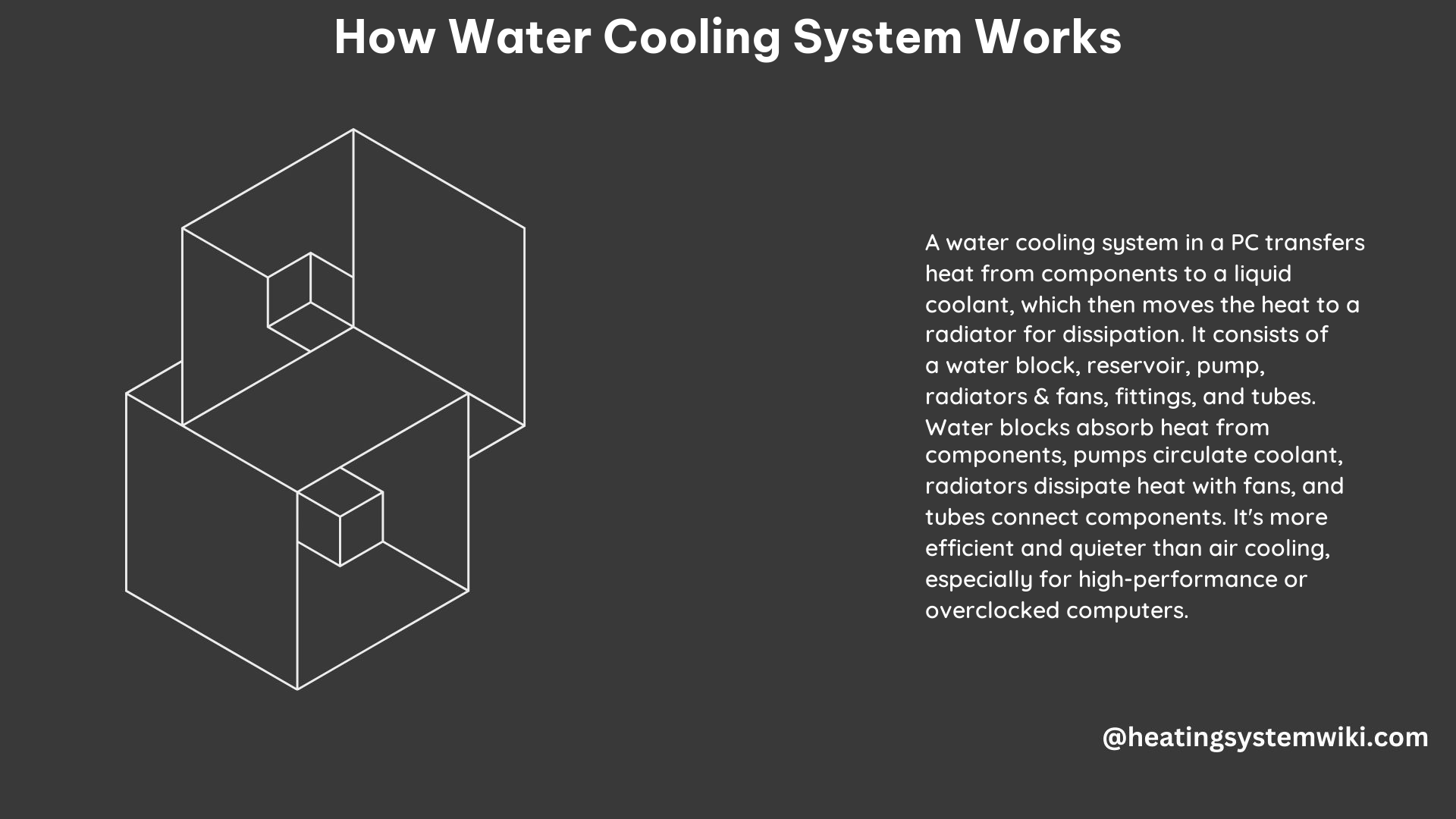A water cooling system for a PC is a highly efficient method of temperature management, especially for high-performance computers that generate a significant amount of heat. This comprehensive guide delves into the intricate workings of a water cooling system, providing a detailed technical overview and a step-by-step DIY installation process.
Technical Specifications
The technical specifications of a water cooling system can vary depending on the specific components used, but some general guidelines are as follows:
Water Block
- Material: Copper or aluminum, which are excellent heat conductors
- Surface area: Large to maximize heat transfer
- Thermal interface: High-quality thermal paste or thermal pads for optimal heat transfer from the component to the water block
Reservoir
- Capacity: Sufficient to hold enough coolant for the entire system and allow for proper circulation
- Design: Allows for air bubbles to be replaced by coolant as it circulates
Pump
- Flow rate: High to ensure efficient circulation of the coolant
- Pressure: Sufficient to push the coolant through the entire loop
Radiators and Fans
- Surface area: Large to effectively cool down the liquid coolant
- Static pressure: High to force air through the radiator fins
- Fan speed and noise: Quiet operation is preferred for a comfortable computing experience
- Fan lifespan: Long-lasting to ensure reliable cooling performance
Fittings
- Material: High-quality, corrosion-resistant materials, such as brass or stainless steel
- Seal: Tight to prevent leaks
Tubing
- Material: Flexible, corrosion-resistant, and heat-resistant, such as PVC or EPDM
- Diameter: Matched to the size of the fittings for a secure connection
How a Water Cooling System Works

A water cooling system for a PC works by circulating a liquid coolant through a closed loop of components within the computer case. The key steps in the process are as follows:
-
Heat Absorption: The water block, which is placed on top of the hot components (such as the CPU or GPU), absorbs the heat generated by these components. The water block is designed with a large surface area to maximize heat transfer from the component to the liquid coolant.
-
Coolant Circulation: The pump, which is the heart of the system, circulates the liquid coolant through the closed loop. The pump generates the necessary flow rate and pressure to ensure efficient circulation of the coolant.
-
Heat Transfer: As the coolant flows through the water block, it absorbs the heat from the component. The heated coolant then travels through the tubing to the radiator.
-
Heat Dissipation: The radiator, which is equipped with a series of fins, acts as a heat exchanger. As the hot coolant flows through the radiator’s copper tubing, the fins absorb the heat, and the fans attached to the radiator blow air across the fins, dissipating the heat to the outside of the PC case.
-
Coolant Cooling: The now-cooled liquid coolant returns to the reservoir, where it is ready to be pumped back through the loop to absorb more heat from the components.
This continuous cycle of heat absorption, coolant circulation, heat transfer, and heat dissipation is what makes the water cooling system an efficient and effective method of temperature management for high-performance computers.
DIY Guide: Building a Water Cooling System
Building a custom water cooling system for your PC can be a rewarding experience, but it requires careful planning and execution. Here’s a step-by-step guide to help you get started:
-
Plan Your Loop: Determine which components you want to cool (e.g., CPU, GPU) and map out the layout of your water cooling loop. Measure the distances between components to choose the right size tubing.
-
Choose Your Components: Select high-quality, compatible components that can handle the heat output of your system. Consider factors such as material, flow rate, and cooling capacity when choosing each component.
-
Install the Water Block: Carefully install the water block on the component you want to cool, ensuring proper thermal interface between the component and the water block. Apply a thin, even layer of high-quality thermal paste or thermal pads.
-
Install the Pump: Position the pump in a location that is easily accessible and has good water flow. Secure the pump properly to prevent vibrations and leaks.
-
Install the Radiator and Fans: Identify a suitable location for the radiator and fans, ensuring good airflow and accessibility. Securely mount the radiator and fans, taking care to align the airflow correctly.
-
Install the Tubing: Cut the tubing to the appropriate lengths and connect the components using high-quality fittings. Ensure the tubing is routed neatly and securely without any kinks or sharp bends.
-
Fill the Loop: Carefully fill the loop with the recommended coolant, taking care to bleed any air bubbles from the system. Check for any leaks and address them before proceeding.
-
Test the System: Power on your PC and monitor the temperatures of the cooled components to ensure they are within safe limits. Adjust the fan speeds or other settings as needed to optimize the cooling performance.
Remember, building a custom water cooling system requires attention to detail and a good understanding of the components and their interactions. If you’re unsure or feel overwhelmed, consider starting with an all-in-one (AIO) water cooling kit, which simplifies the installation process.
Conclusion
A water cooling system is a highly efficient and effective method of temperature management for high-performance computers. By understanding the technical specifications and the step-by-step process of building a custom water cooling system, you can unlock the full potential of your PC and enjoy improved performance, lower temperatures, and a more customized computing experience.
